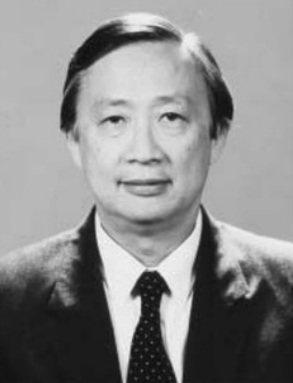Peter K. N. Lok
Foreword - Airport of the Nine Dragons
Kai Tak Airport has become such a household name in world aviation for squeezing a quart into a pint pot. The traffic throughout has exceeded the wildest expectations of anyone, including all my predecessors thrice removed and more.
With the single runway involving an unorthodox approach from one direction, to put it mildly, one tiny passenger terminal of about 27,000 square metres, a two-unit high-tech terminal and 69 aircraft parking bays, it was handling as of January 1995 25.45 million passengers and 1.30 million tonnes of cargo, through some 144,000 international aircraft movements in a year. What a far cry from the day 31 August 1958 when the old Kai Tak cross-runways had to be closed down prematurely and the present runway pressed into action with its unpainted asphalt surface still warm to the touch!
What happened on that fateful day was that a C-54 (DC-4), coming over the then barren hills on the shores of the then unpolluted and unreclaimed Kowloon Bay, to land on the then runway 31, struck the sea wall with its main gears on the undershoot, and slid to a stop at exactly the intersection with runway 07/25. It burnt out, but not before all on board clambered to safety. After that, a DC-3 gracefully glided in to land on the remainder of runway 07 and stopped well short of the wreckage. The first aircraft to land on the brand-new runway was a search-and-rescue amphibian type which loitered around for about four hours until everybody else holding had to divert. The nearest diversion aerodrome in those days was in south Taiwan. The first commercial aircraft to depart from
the new runway was, not surprisingly, a Cathay Pacific aircraft. No, no turbo props yet on the Cathay inventory. But those transitional days to the first turbine-powered aircraft types were to my mind the most glamorous days of civil aviation.
Kai Tak has served Hong Kong well, and since 1978 the rest of China. In the 10 years up to 1993, passenger traffic grew at almost 11 per cent per annum whereas the world average was just under 7 per cent. Too bad that in 1994, Kai Tak’s passenger traffic growth dropped to 3.1 per cent whereas the world average was 5 per cent, due to Kai Tak’s many times stretched capacity being reached, and as many as 300 flights a week having to be turned away. One can only wait with bated breath for the opening of the new grandiose Chek Lap Kok airport, some time in 1997.
From its humble 3390-metre runway, non-stop flights serve destinations in Europe and the west coast of North America. It used to take as long for the Sunderland flying boats to get from Kowloon Bay to Singapore, non stop. Yes, Kai Tak has served us well.
With the single runway involving an unorthodox approach from one direction, to put it mildly, one tiny passenger terminal of about 27,000 square metres, a two-unit high-tech terminal and 69 aircraft parking bays, it was handling as of January 1995 25.45 million passengers and 1.30 million tonnes of cargo, through some 144,000 international aircraft movements in a year. What a far cry from the day 31 August 1958 when the old Kai Tak cross-runways had to be closed down prematurely and the present runway pressed into action with its unpainted asphalt surface still warm to the touch!
What happened on that fateful day was that a C-54 (DC-4), coming over the then barren hills on the shores of the then unpolluted and unreclaimed Kowloon Bay, to land on the then runway 31, struck the sea wall with its main gears on the undershoot, and slid to a stop at exactly the intersection with runway 07/25. It burnt out, but not before all on board clambered to safety. After that, a DC-3 gracefully glided in to land on the remainder of runway 07 and stopped well short of the wreckage. The first aircraft to land on the brand-new runway was a search-and-rescue amphibian type which loitered around for about four hours until everybody else holding had to divert. The nearest diversion aerodrome in those days was in south Taiwan. The first commercial aircraft to depart from
the new runway was, not surprisingly, a Cathay Pacific aircraft. No, no turbo props yet on the Cathay inventory. But those transitional days to the first turbine-powered aircraft types were to my mind the most glamorous days of civil aviation.
Kai Tak has served Hong Kong well, and since 1978 the rest of China. In the 10 years up to 1993, passenger traffic grew at almost 11 per cent per annum whereas the world average was just under 7 per cent. Too bad that in 1994, Kai Tak’s passenger traffic growth dropped to 3.1 per cent whereas the world average was 5 per cent, due to Kai Tak’s many times stretched capacity being reached, and as many as 300 flights a week having to be turned away. One can only wait with bated breath for the opening of the new grandiose Chek Lap Kok airport, some time in 1997.
From its humble 3390-metre runway, non-stop flights serve destinations in Europe and the west coast of North America. It used to take as long for the Sunderland flying boats to get from Kowloon Bay to Singapore, non stop. Yes, Kai Tak has served us well.


